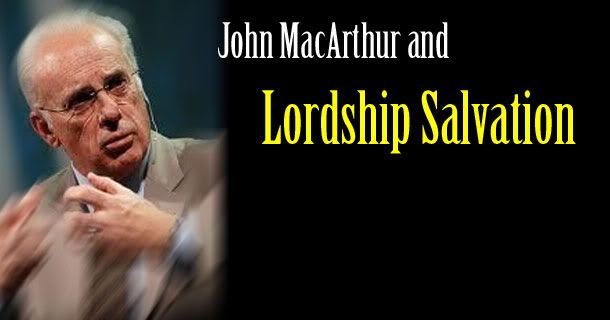Since the inception of Christ’s church, it’s members have been contending “for the Faith which was once for all delivered to the saints”. The apostles, particularly St. Paul, spent what would seem by today’s standards an exorbitant amount of time and energy defending that Faith, both against outside forces and enemies from within. Those first crucial years formed the basis of the Christian religion, spread out across a large area of the Mediterranean and Roman empire reaching, as God had planned it, both Jews and Gentiles everywhere.
One of the primary battles seen in those days came in the form of pagan ideas seeping into the church at large. This process, known as syncretism, began a fight that continues to this day. The apostle John spent time in his letters combating pagan beliefs, addressing such odd behavior and thoughts as the belief that the body was evil and useless and could be abused at will to the belief that Jesus was nothing more than a spirit with no body. St. Peter in his second letter addressed false teachers who were extremely shameless in their activities, even “carousing in broad daylight” (2 Peter 2:13), and said they “have left the straight way and wandered off to follow the way of Balaam” (2 Peter 2:15). St. Jude wrote concerning antinomianism, as did St. Paul in Romans 6 and elsewhere. St. Paul, in particular, fought against legalism and the works righteousness idealism that plagued his own Jewish brothers, the Pharisees.
This battle for the Faith continued with the next generation of the church, with Iraneaus, Polycarp, and Justin Martyr to name a few. When Arianism, or the belief that Jesus was not God in the flesh, reared its head in the third century the first ecumenical council, the Council of Nicea, was called to combat and restore the Faith to its original form once again. The Church fought valiantly against Pelagius (and later the semi-pelagians), stating firmly in the Canons of the Council of Orange:
“If anyone denies that it is the whole man, that is, both body and soul, that was “changed for the worse” through the offense of Adam’s sin, but believes that the freedom of the soul remains unimpaired and that only the body is subject to corruption, he is deceived by the error of Pelagius and contradicts the scripture which says, “The soul that sins shall die” (Ezek. 18:20); and, “Do you not know that if you yield yourselves to anyone as obedient slaves, you are the slaves of the one whom you obey?” (Rom. 6:16); and, “For whatever overcomes a man, to that he is enslaved” (2 Pet. 2:19).” (Canon 1)
The reformation happened exactly for the same reasons. When the Gospel of Jesus Christ had itself been obscured in works righteousness in medieval times, God called Martin Luther, Erasmus, Philip Melenkthon, John Calvin and their contemporaries to step up to restore the Faith once more. This battle for the Faith continued with the coming enlightenment and the era of rationalism, through the time of Frederick Schleiermacher and the dawning of protestant liberalism. Each generation, it would seem, has been called to defend the Faith against those who would pervert it towards their own ends or, more insidiously, because they simply don’t know better.
Today, among many of the citizens and the thousands of denominations that proliferate in the Americas, prosperity reigns. The United States is noted as one of the wealthiest countries in the world, with such abundance and opportunity that millions flock across her borders every year seeking “life, liberty and the pursuit of happiness”. In a culture where entertainment is king, “pimped out” rides are a new national pastime and morality is redefined on the slightest whim, the church at large still struggles to maintain the “Faith once for all delivered to the saints”. In the following pages the author will attempt to address today’s largest problem that the church has to face: The Prosperity Gospel. One should find it confounding that in a country as wealthy as ours, middle class and upper class church goers would want more “prosperity” than they already have.
An idio-syncretic history
First of all, the author wants to reiterate what the Gospel is, Biblically. It is the Good news, the proclamation that God in His mercy has sent His son to pay the penalty for the sin of the world, and has fulfilled the promise to redeem his people and give them eternal life. This is best summed up in the scripture that every Christian knows: “For God so loved the world that He gave His only begotten son that whosoever believeth in him should not perish, but have everlasting life.” This is the culmination of thousands of years of “redemptive” history, following from the covenant with Abraham, continued with Isaac, Jacob, Moses, and David to the coming of our Lord and Savior, Jesus Christ. This is the prosperity that can never die, where people can “glorify God and enjoy him forever” 1
But today, over and against what has been handed down to us once for all, is a radically different understanding of the Gospel. Along with the good news of Jesus Christ is the idea that God wants all His children to be healthy and wealthy; to not be deprived or to suffer in any way. This “gospel” can sometimes be stated as “name it and claim it”, meaning if one has faith that something can be had, one need only name it in prayer and it becomes the property of the one who prayed. To find out where this radical shift began, we shall look at some of recent history, consult the confessions of the reformation churches to compare with what is taught today, and consult those who teach this “prosperity gospel” in the hopes of gleaning insight into how we got to where we are.
The author of this paper would like to draw attention to two individuals from the early twentieth century to begin delving into the origins of today’s prosperity gospel: Essek William Kenyon and Norman Vincent Peale. The former of the two, also known as E.W. Kenyon (1867-1948), was an evangelist and early radio personality who was known as “the faith builder” among his many followers. It is accepted today that he was the unintentional founder of the prosperity movement, known also as the “word of faith” movement. Influenced by the day’s philosophies, he proposed in his book, Jesus the Healer:
‘When you know that "By His stripes you are healed" and you know it as you know that two and two are four, the adversary will have no power over you.
When you know the Power and Authority of the Name of Jesus and that you have a legal right to use it, and the adversary lays siege to you, you will not be filled with fear. You will simply laugh at him and say, "Satan, did you know you were whipped? Leave my body." He will leave.’
This is the standard by which today’s prosperity movement proponents obtain their theology. They take Isaiah 53:5 and 1 Peter 2:24, conflate them to mean that Salvation and physical healing are one and the same, and state it as an overriding truth. Kenyon also wrote in his essay, Do you believe in Miracles?:
Then we have a third group who claim miracles are still being performed; that the sick are healed, that prayers are answered, and that God is a Living reality in the daily life of the believer.
We cannot ignore the amazing growth of Christian Science, Unity, New Thought, and Spiritism.
Kenyon had allowed the teachings of Christian Science to infiltrate his radio broadcasts and his writings. Christian science grew out of New Thought ideals, whose practitioners taught “positive affirmation” leading to health and prosperity. Phineas Parkhurst Quimby (1802-1866), who believed he had discovered the method by which Jesus healed, taught “Disease is due to false reasoning in regard to sensations, which man unwittingly develops by impressing wrong thoughts and mental pictures upon the subconscious spiritual matter.”2.
Norman Vincent Peale (1898-1993), published his book, the Power of Positive Thinking, in 1952 and it has sold nearly 20 million copies since and been translated into over 41 languages. His radio program, the Art of Living, was broadcast by NBC and was on the air for 54 years. At any given time one can type into any Internet search engine “Norman Vincent Peale” and get an endless stream of quotes on positive thinking. He wrote in his introduction to Positive Imaging:
"There is a powerful and mysterious force in human nature... a kind of mental engineering ... a powerful new-old idea.... The concept is a form of mental activity called imaging .... It consists of vividly picturing, in your conscious mind, a desired goal or objective, and holding that image until it sinks into your unconscious mind, where it releases great untapped energies ....When the imaging concept is applied steadily and systematically, it solves problems, strengthens personalities, improves health, and greatly enhances the chances for success in any kind of endeavor. The ideas of imaging has been around for a long time and it has been implicit in all the speaking and writing I have done in the past.
From here we can trace the proliferation of the “word of faith” theology, through E. W Kenyon to Kenneth Hagin, founder proper of the “word of faith” movement to Kenneth Copeland, popular teacher of our day and whose book The Laws of Prosperity we will consult to discover exactly what is found in their belief system.
1 Westminster Shorter Catechism, Question 1
2 The Quimby Manuscripts, edited by Horatio W. Dresser (New Hyde Park, NY: University Books, 1969 [orig. 1921]), 32-35







 8:34 PM
8:34 PM
 Matthew
Matthew

